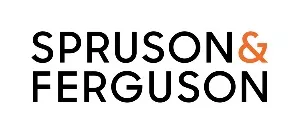There are a number of measures of a country's "innovativeness". When each of government R&D spend, number of academic publications, GNP, number of successful spin-off companies, etc. are reduced to a "per capita" basis, one can begin to get a feel for where the "innovation hotspots" are across the globe.
Another measure that has assumed increased standing in recent times is the number of patents per capita any one country produces. Specifically, the number of United States patents per capita per country ("USPPCPC") is now regarded as a persuasive indicator of a country's innovative activity.
Of course, the USPPCPC is not the "be all and end all" of innovation statistics. Much Australasian-based "innovation" is for the purposes of the local market only - thereby making United States patents largely irrelevant. On the other hand, "invention" - arguably a higher form of innovation, is generally more amenable to the international stage. The point being that the USPPCPC is "but one" measure of a country's inventive/innovative landscape.
Notwithstanding their relative successes in many of the other measures listed above, the latest USPPCPC data show that both Australia and New Zealand have been punching significantly below their weight and underachieving somewhat in respect of developing and securing intellectual property within the world's largest economy.
Australian-based organisations were awarded 0.82% of the utility patents issued by the United States Patent and Trademark Office (USPTO) in 2008/09. These figures are offset against Australia's population, which is around 1.8% of the OECD total. New Zealand-based organisations gained 0.06% of the 08/09 US patent share, reflecting poorly against their population share of about 0.36%. Comparative 2009/10 data have yet to be released.
The USPTO issued 157,772 utility patents during 2008/09. Australia and New Zealand's respective USPPCPC "scores" of 0.00006 and 0.00003 are actually more than an order of magnitude worse than those reported recently throughout the local media.*
Whilst these statistics reflect somewhat negatively upon Australasia's innovation landscape, it is likely that they are actually only telling part of the story. The statistics reflect the country in which the patent assignee is based, as opposed to the country in which the IP was developed. Accordingly, the "true" figures may be somewhat higher on the basis that a significant portion of Australasian IP is actually held by companies based offshore for tax purposes. Given that AU/NZ each have a 30% company tax rate – and that countries such as the UK and Benelux have or will soon have "Patent Box" legislation (i.e. taxation rates of about 5-8% on patent revenues; see, our previous article: http://www.shelstonip.com/news_story.asp?m=1&y=2010&nsid=159), it is entirely possible that the already-low ratios of Australasian-based US patents per capita may soon take an even greater dive by virtue of more and more companies relocating offshore.
This in turn allows us to adopt a "best of both worlds" attitude to the statistics. On the one hand, we can easily discount any prima facie conclusions drawn above by applying a "Patent Box"-type argument; and on the other hand, should the 2009/10 statistics show any measure of improvement, the "real" result will probably be even more significant as the data will have likely been mollified by Australasian companies continuing to move offshore.
Whilst the present statistics can be conveniently discounted on the basis of foreign ownership of Australasian IP, the other side of the coin is that the relatively low numbers of US patents owned in our corner of the world may reflect a reluctance or uncertainty on behalf of local organisations to enter the world's most lucrative market.
Shelston IP has a genuine interest in assisting Australasian-based organisations secure foreign patent rights prior to entering their target markets. We would be pleased to assist patent applicants with their foreign and local business strategies.
The content of this article is intended to provide a general guide to the subject matter. Specialist advice should be sought about your specific circumstances.


